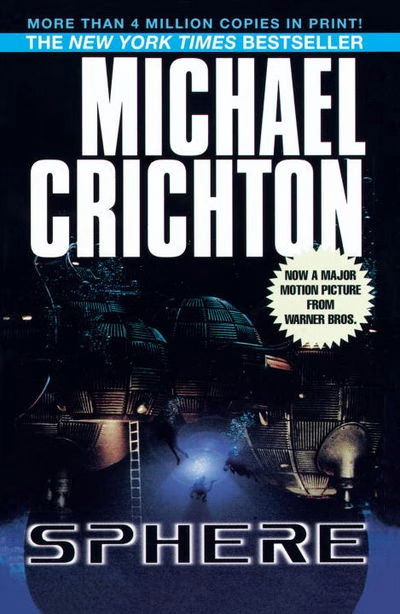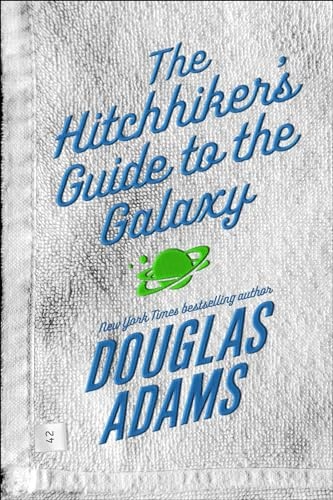Plot Summary
The Summons
Dr. Norman Johnson, a 53-year-old psychologist, is abruptly summoned by the U.S. Navy to a remote location in the middle of the Pacific Ocean. He is an expert on the psychology of survivors and is told he is needed at the site of an airplane crash. Upon his arrival at a massive fleet of naval vessels, he is greeted by the project commander, Captain Harold “Hal” Barnes. Barnes reveals the truth: this is not an airplane crash. A colossal spacecraft, estimated to be at least 300 years old, has been discovered resting on the ocean floor, a thousand feet beneath the surface.
Norman is stunned to learn that he is the final member of a specialized scientific team being assembled to investigate the craft. This team, known as the ULF (Unknown Life Form) team, is composed of the very individuals Norman himself recommended in a top-secret government report he wrote years earlier—a report he considered a speculative exercise to pay for his house. The team includes:
- Dr. Ted Fielding: A brilliant but egotistical astrophysicist.
- Dr. Beth Halpern: A sharp and physically formidable zoologist.
- Dr. Harry Adams: A young, exceptionally intelligent, and cynical mathematician.
The Descent and Discovery
The team descends in a minisubmarine to DH-8, a state-of-the-art deep-sea habitat constructed near the mysterious object. The pressure and the helium-rich atmosphere are disorienting, and the cramped, isolated environment immediately begins to fray the scientists’ nerves.
Barnes briefs them on the spacecraft. It is a half-mile long, perfectly cylindrical, and shows no signs of damage, despite its apparent crash. Analysis of a metal sample reveals a titanium alloy of a kind unknown to modern science. The initial assumption is that it is an alien vessel. The team prepares for what they believe will be the most momentous event in human history: first contact with an extraterrestrial intelligence.
Entering the Spacecraft
Using a remote-operated vehicle, the team finds a door on the craft with instructions written in modern English. This shocking discovery shatters the alien hypothesis. Harry Adams, through cold deduction, presents a new theory: the ship is not alien but an American spacecraft from the future, specifically the year 2043. It has traveled backward in time after passing through a black hole, crashing into the Pacific three centuries ago.
The team dons deep-sea suits and enters the ship. Inside, they find a flight deck designed for humans, crew quarters, and vast cargo bays. The technology is advanced but recognizably human in origin. The ship appears to have been launched unmanned, save for a mannequin in a pilot’s chair. The flight recorder confirms Harry’s theory, showing the ship’s journey through a black hole.
The Sphere
Deep within the spacecraft’s cargo hold, the team makes its most profound discovery: a perfect, gleaming silver sphere, approximately thirty feet in diameter. It is flawlessly smooth, with no seams or markings, except for a series of intricate, unearthly grooves on one side. The sphere is clearly not of human origin; it is an artifact the ship must have collected on its journey through another part of the universe.
The team returns to the habitat, fascinated and perplexed by the sphere. As they study it via remote cameras, a cyclone forms on the surface, forcing the naval support fleet to retreat. The team is now completely isolated, trapped a thousand feet underwater for several days. During this tense period, Harry Adams, in a moment of insight he cannot later explain, walks back to the ship, figures out how to open the sphere, and steps inside.
The Manifestations
Harry emerges three hours later, suffering from a severe headache and amnesia about what occurred inside the sphere. Almost immediately, the environment around the habitat begins to change. The previously barren seafloor comes alive with bizarre and impossible creatures: swarms of six-tentacled squid and shrimp that have no stomachs. Later, a cloud of tiny, flesh-eating jellyfish attacks and kills Navy crewmember Jane Edmunds.
The habitat’s computer then activates on its own, displaying a repeating sequence of numbers. Harry deciphers it as a simple substitution code. The sender is an entity calling itself “Jerry,” who claims to have been inside the sphere. Jerry’s personality is childlike, inquisitive, and playful, but also demanding and prone to tantrums. It can hear their spoken conversations, leading them to believe it can read their minds.
The team’s interactions with Jerry grow increasingly tense. When they displease him, he manifests a gigantic squid—a creature from Harry’s deepest childhood fears—which attacks the habitat. During the terrifying assault, Captain Barnes, electronics technician Tina Chan, and the enthusiastic Ted Fielding are all killed. The habitat is severely damaged, leaving only Norman, Beth, and Harry alive.
The Revelation
Shattered by the attack, Norman re-examines the original coded message from “Jerry.” He discovers a chilling truth: Harry’s initial translation was wrong. The message does not say “MY NAME IS JERRY.” It says, “MY NAME IS HARRY.”
Norman realizes that “Jerry” is not an alien. “Jerry” is a manifestation of Harry Adams’s own unconscious mind. When Harry entered the sphere, he was granted a terrifying power: the ability to make his thoughts, fears, and subconscious desires a reality. He is not consciously aware of this power. His repressed fear of the deep, his childhood terror of the giant squid, and his annoyance with his teammates have all been unconsciously transformed into deadly, real-world events.
Realizing the immense danger, Norman and Beth manage to sedate Harry, rendering him unconscious. The attacks immediately cease. However, in the interim, a paranoid Beth secretly enters the sphere herself, gaining the same power. Her own deep-seated insecurities and fears of being victimized begin to manifest. She creates sea snakes and a formless, terrifying “tornado” of energy, all while projecting her actions onto Norman, convinced that he is the one with the power and is trying to kill her.
The Final Confrontation
Beth’s paranoia culminates in her setting a series of powerful explosives around the spacecraft and the habitat, all linked to a twenty-minute timer that she activates. Norman is forced to confront her. He escapes her attempts to kill him, enters the sphere himself, and gains the power. He understands that the sphere grants the user the ability to alter reality by imagining it. He now has the same power as Beth and Harry.
He returns to the habitat to rescue them. A final, desperate struggle ensues as Norman and a now-conscious Harry subdue the deranged Beth. With only minutes left before the explosives detonate, the three of them escape in the habitat’s emergency minisubmarine. They race to the surface, reaching it just as the massive explosion obliterates the spacecraft, the habitats, and the sphere, erasing all physical evidence of their discovery.
The Decision
Now safe in a decompression chamber aboard a Navy vessel, the three survivors—Norman, Beth, and Harry—come to a sobering conclusion. They all possess the power to reshape reality with their minds. They recognize that this power, which brings the darkest parts of the human unconscious to life, is too dangerous for humanity to possess. They agree to use their power one last time. Together, they choose to forget. They erase their memories of the sphere and the power it granted them, altering reality itself. The official record becomes a simple story of an underwater habitat that suffered a technical malfunction during a storm, resulting in a tragic accident. They return to the world with no memory of the sphere, only a shared sense of loss for their fallen colleagues.
Characters
Dr. Norman Johnson
The protagonist, Norman is a middle-aged academic psychologist whose life is defined by quiet intellectualism rather than action. Summoned to the habitat, he initially feels out of his depth among the hard scientists and military personnel. His role as the group’s psychologist forces him to be an observer and mediator, a position that gives him unique insight into the escalating paranoia and fear. Norman’s true test comes when he realizes the threat is not external but psychological. He is the one who ultimately understands the nature of the sphere’s power and orchestrates the final, crucial decision to relinquish it, representing the triumph of wisdom and self-awareness over unchecked power.
Dr. Harry Adams
A young, prodigious mathematician, Harry is defined by his cold logic and biting cynicism. As a black man from a poor background who found his way to Princeton, he is fiercely intelligent but also arrogant and socially isolated, using his intellect as both a shield and a weapon. His deductive reasoning is essential to the team’s initial breakthroughs, but he is blind to the power of the unconscious. After he enters the sphere, his unacknowledged childhood fears and repressed anger are given terrifying form, making him the unintentional antagonist for much of the story.
Dr. Beth Halpern
A tough, athletic, and highly competent zoologist, Beth projects an image of strength and self-reliance. This exterior, however, conceals deep-seated insecurities stemming from past professional and personal betrayals by men. She is confrontational and quick to anger, viewing the world as a place where she must constantly fight for respect. When she gains the power from the sphere, her core belief in her own victimhood becomes a self-fulfilling prophecy. Her paranoia spirals, transforming her from a scientist into a deadly threat, convinced she is defending herself against the very people she needs most.
Dr. Ted Fielding
An astrophysicist with a flair for the dramatic, Ted is driven by an insatiable hunger for fame and a place in history. He is endlessly optimistic and enthusiastic, desperate for the discovery to be a glorious first contact with benevolent aliens. His mind is a storehouse of information, but his thinking is often superficial and self-aggrandizing. Ted represents the naivety of the scientific community, the romantic hope for a wondrous universe that blinds him to the darker, more complex realities of both the cosmos and the human mind.
Captain Harold “Hal” Barnes
As the commander of the mission, Barnes embodies the military-industrial mindset. He is pragmatic, secretive, and authoritarian, focused on control and the potential strategic applications of the discovery. While not an evil man, his perspective is limited by his training; he views the spacecraft and the sphere not as wonders to be understood, but as assets to be controlled and potentially weaponized. He consistently underestimates the psychological and existential nature of the threat they face.
Jerry
“Jerry” is the name given to the entity that communicates with the team through the habitat’s computer. At first, they believe it to be an alien intelligence from within the sphere. However, “Jerry” is actually a direct manifestation of the unconscious mind of whoever currently wields the sphere’s power. Its personality shifts accordingly: with Harry, it is a powerful, playful, and frighteningly amoral child; with Beth, it is a paranoid and defensive force. Jerry is not a character in itself, but a mirror reflecting the unacknowledged “shadow self” of its creator.
Core Themes
The Power and Danger of the Unconscious Mind
This is the central theme of Sphere. The novel posits a terrifying “what if”: what if our thoughts, especially the ones we don’t control, could become real? The sphere grants this power, but it does not distinguish between conscious intent and the repressed fears, childish whims, and dark impulses of the unconscious. The characters are destroyed not by an alien monster, but by their own internal demons given physical form. The book serves as a powerful allegory for the Jungian “shadow self,” arguing that true maturity and safety lie not in denying our dark side, but in understanding and integrating it.
The Nature of Reality
Sphere relentlessly questions the firmness of objective reality. The power granted by the sphere demonstrates that reality is malleable, shaped by belief and imagination. The impossible sea creatures, the phantom crewman, and the shifting architecture of the spaceship all blur the line between what is real and what is imagined. The story’s ultimate conclusion—where the survivors collectively agree to alter reality by erasing their own memories—is the ultimate expression of this theme. Reality is not a fixed constant, but a consensus that can be changed.
Fear and Its Manifestations
The novel is a deep exploration of fear. Each character’s primary fear is not only exposed but made manifest. Harry’s childhood phobia of the giant squid becomes a real, rampaging monster. Beth’s fear of being victimized leads her to create a scenario where she is hunted. Norman’s fear of failure and helplessness is tested to its absolute limit. Sphere argues that unacknowledged fear does not disappear; it festers in the unconscious and, if given power, will emerge as a destructive, external force.
Human Fallibility in the Face of the Unknown
Crichton uses the “perfect” scientific team to illustrate a deeply pessimistic view of human nature. Despite their collective genius, the characters are brought low by their all-too-human flaws: ego, jealousy, paranoia, insecurity, and fear. Their intellectual brilliance is useless against the irrational forces unleashed from within themselves. The story is a critique of scientific hubris, suggesting that knowledge and logic alone are insufficient tools for navigating the universe, especially when the greatest unknown is the human mind itself.
Plot devices
The Sphere
The sphere is the novel’s central enigma and MacGuffin. It is a perfect, impenetrable, and passive object that serves as a catalyst for the entire plot. It functions as a “mental enzyme,” not acting on its own, but enabling the characters to unlock a latent power within themselves. Its mysterious, non-human origin makes it a perfect blank slate onto which the characters project their hopes (Ted), fears (Harry), and paranoia (Beth). It is a mirror that doesn’t reflect one’s image, but one’s psyche.
Isolation and Claustrophobia
The setting of the deep-sea habitat is a classic “pressure cooker” device. By trapping the characters a thousand feet beneath the ocean and then cutting them off from the surface with a storm, the narrative creates an environment of extreme physical and psychological stress. This claustrophobic isolation strips away the characters’ social inhibitions and intellectual pretenses, forcing their true personalities and fears to the surface where they can be manifested by the sphere’s power.
Scientific Exposition
True to Michael Crichton’s style, the narrative is densely woven with detailed scientific explanations. Concepts from psychology (group dynamics, the unconscious), physics (black holes, spacetime), marine biology (deep-sea life, bioluminescence), and technology (saturation diving, remote vehicles) are explained with authority. This device serves to ground the fantastical elements of the story in a veneer of scientific plausibility. By making the setting and the science feel real, Crichton makes the horror of thoughts-made-real all the more terrifying and immediate.
The Unreliable Reality
The primary narrative device born from the sphere’s power is the creation of an unreliable reality. From the moment Harry emerges from the sphere, neither the characters nor the reader can be certain if what they are experiencing is objectively real or a subjective manifestation. The sea creatures, the phantom sailor, the changing layout of the ship—all these elements create a pervasive sense of paranoia and suspense. The very fabric of the story’s world is unstable, forcing the characters (and reader) to constantly question what is true.





